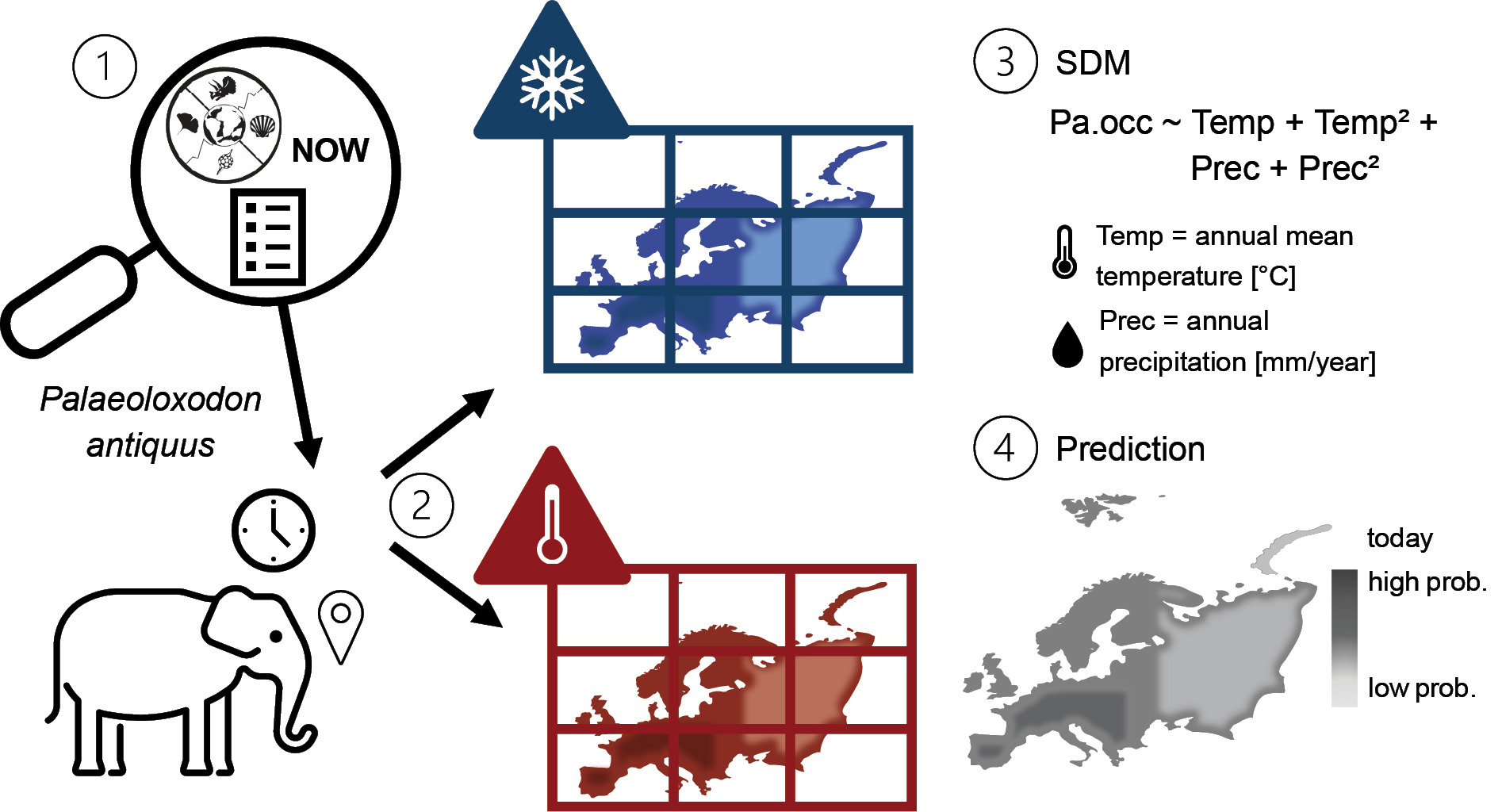News
Europe’s lost landscape sculptors: Today’s potential range of the extinct elephant Palaeoloxodon antiquus
20th May 2025

Even under today’s climatic conditions, the long-extinct straight-tusked elephant could still live in Europe.
The straight-tusked elephant (Palaeoloxodon antiquus) lived on our continent for around 700,000 years. The species survived multiple ice ages before becoming extinct during the last one due to additional hunting pressure from humans. Throughout its existence, the straight-tusked elephant helped shape Europe's landscape, maintaining open spaces and light woodlands. Many native plant species are still adapted to these conditions today.
Our study assigned fossil finds from across Europe to either a warm or cold stage and used climate models from these periods to reconstruct the realised niche of the straight-tusked elephant. A comparison with modern climate data suggests that straight-tusked elephants would still be able to live in Europe today. The climate in Western and Central Europe would be particularly suitable, except for mountainous regions such as the Alps and the Caucasus.
Understanding how climate and environmental changes have historically affected large mammals can provide valuable insights for modern conservation strategies. Modern conservation projects actively reintroduce large herbivores to Europe. However, this comes with challenges, as the ecological processes that have shaped modern ecosystems are not yet fully understood. Additionally, today’s large herbivores cannot entirely replace the role of extinct megafauna, as both the animals themselves and the landscape structures, as well as species interactions, have changed significantly.
